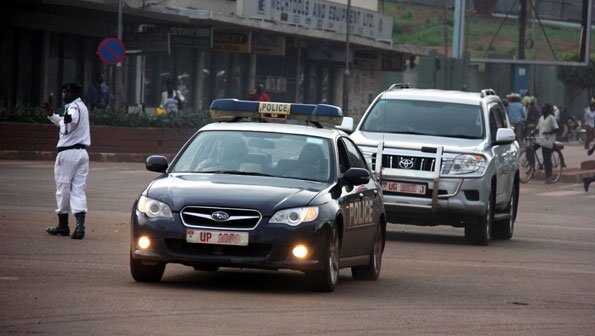Every day motorists in Kampala city and nearby suburbs wake up early morning to yet another nightmare; traffic jams.
The traffic jams have become such a pain in the neck to most motorists that on average, motorists lose up to two hours during peak traffic time while leaving or getting into the city. And while in the past the traffic jams were manifest in the city centre, now they have spread out to the highways and now literally start at one’s gate.
It is not difficult to tell why Kampala is in this kind of traffic mess. Statistics show that 70 per cent of all motor vehicles in Uganda (Uganda currently has about 500,000 motor vehicles) operate in Kampala.
Other official figures also indicate that 90 per cent of the 10,000 minibuses operating in Kampala are providing downtown service (The Kampala Traffic Improvement Project, 2002).
The mess
However, as the different motorists struggle to beat the bumper-to-bumper jam to drop a child at school or rush to catch an early meeting at office, there always comes a vehicle which doesn’t follow the queue. It will drive on the shoulder, on road kerb or even on the opposite side to find its way.
Sometimes it will be an ambulance trying to rush the sick to hospital, a police patrol vehicle ferrying suspects, or a presidential [or some other VIP]convoy. But many times it will be any red-plated pick-up truck, Toyota Land Cruiser or any other “big” government car.
Indeed, road users are familiar with heavily tinted vehicles whose occupants usually keep driving irrespective of the jam. The registration numbers of the vehicles belong to the President’s Office, army, police, Local Government, etc.
On July 2, this regular road scene played out at the Mukwano roundabout in Kampala at 3pm as a Toyota Land Cruiser bearing ministry of Local Government registration number ignored the traffic rules and in presence of traffic police officers, decided to drive on the right so oncoming vehicles had to stop and give way. Motorists in Uganda as supposed to keep left.
Abuse
Even ambulances that ordinarily have the right of way are now being abused with drivers turning on the siren even when they are not in an emergence situation, often followed by a pack of opportunist motorists taking advantage of space cleared for the ambulance!
With such incidents common on the roads, traffic officers are left powerless since they aren’t aware of the occupants and what urgent mission they are up to.
Entitled
So who is entitled to right of way and who isn’t?
According to the Director of Traffic and Road Safety in the Uganda Police, Dr Steven Kasiima, there are several institutions/individuals that have continuously abused traffic rules by pretending to be Very Important Persons (VIPs).
Dr Kasiima said it is only in emergency situations that somebody can be allowed to have right of way. He added that private vehicles whether tinted or not tinted, traditional leaders, and bullion vans from commercial institutions are not entitled to right of way.
He said the public isn’t knowledgeable of this and this partly is the cause of trouble on the road. Dr Kasiima says if the public was aware of their road usage, then they wouldn’t be giving way to people who are not entitled to right of way.
He reaffirmed the police guideline as it is only police vehicles that are entitled to right of way but sometimes army vehicles are allowed to clear way provided that they are on security mission or are escorting a highly placed person in the army.
“The amended Traffic Act allows ambulances, President, Vice President, Prime Minister, Speaker and Deputy Speaker, Chief Justice and Deputy Chief Justice plus a bullion van from Central Bank right of way. However, there are times according to situations when any person can ask for right of way according to the nature of the journey,” Dr Kasiima said.
Dr Kasiima clarified that ambulances are only entitled to right of way when on emergency but when one isn’t handling an emergency, there isn’t need for right of way.
Another category of people whom Dr Kasiima said are not supposed to have right of way are the traditional leaders who move around with their subjects on pick-up trucks acting as guards to clear way.
“Traditional leaders are not catered for and I appeal to traditional leaders to come to us and we give them police vehicles if they want right of way. Security vehicles enjoy right of way but have no right of way unless in emergency situations with permission from police. The Act doesn’t cater for them.”
Other categories of road abusers that Dr Kasiima warned for violating traffic rules are bullion vans from commercial banks/institutions, funeral vans, and private security firms. He appeals to the public to respect any police vehicle with a siren because such a vehicle is entitled to right of way.
The right ones
“Any security vehicles or motorcycle with siren or police and army number plates can claim right of way but not those with civilian number plates. Otherwise even a police lorry can be used for right of way,” he said.
Several ministers, army officers and senior government officials continue abusing traffic rules in the guise that they are busy and handling sensitive assignments.
However, Dr Kasiima said traffic officers normally arrest those who violate these rules and are charged basing on the traffic rules. He says the reason as to why there are always police motorcycles and pick-up tracks at traffic lights, along highways and mobile traffic section, is purely to apprehend those breaking these rules.
Motorists speak out
Motorists who this newspaper talked to on how they manage such situations voiced their frustration with the increasing presence of VIPs on the roads. However, others say it is understandable for the ambulances and big government officials like the President.
Mr Micheal Mugalu, a boda boda cyclist, said he has no problem paving way for the ambulances and the senior government officials. He said a person of the President and other senior people deserve right of way.
“It is no big deal because in most cases it’s an emergency that is only going to last a few minutes and in a community there is always a bigger person who has more rights than others so in cases of patients they have their right to be driven in ambulances,” Mr Mugalu says.
Another city dweller, Mr Kaima Shafiiq, who works as a presenter on one of the radio stations, said: “There is a lot inconvenience. When the sirens start, you begin fidgeting and you end up knocking pedestrians and also other road users in the name of creating space.”
Mr Kaima added: “And by the way if you are driving and get held up for 15 minutes in jam that’s a lot of time to spare. Some ambulances do cause accidents in the name of taking a patient to hospital. One time, an ambulance by passed me with a siren yet he was rushing to go buy chicken at Wandegeya; can you imagine? Sometimes these ambulances have no patients in them.”


